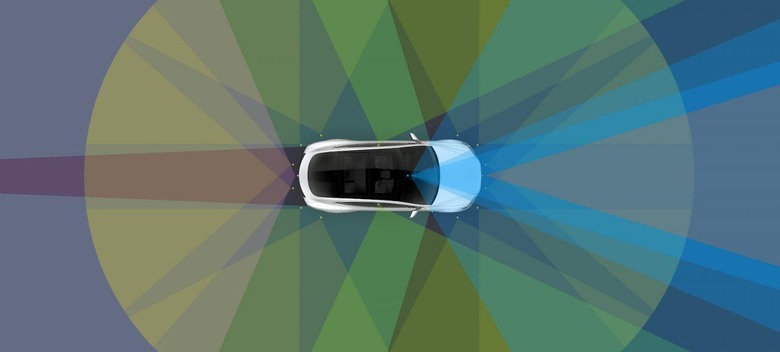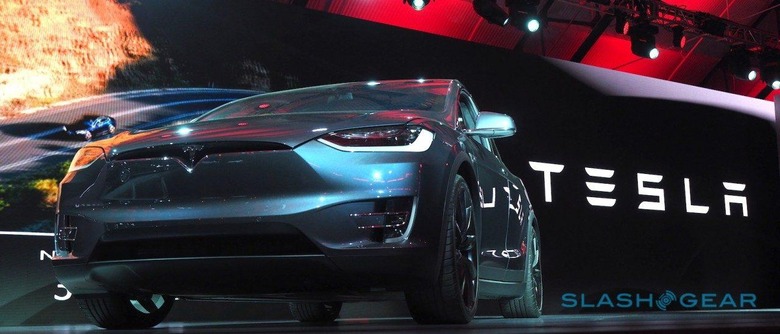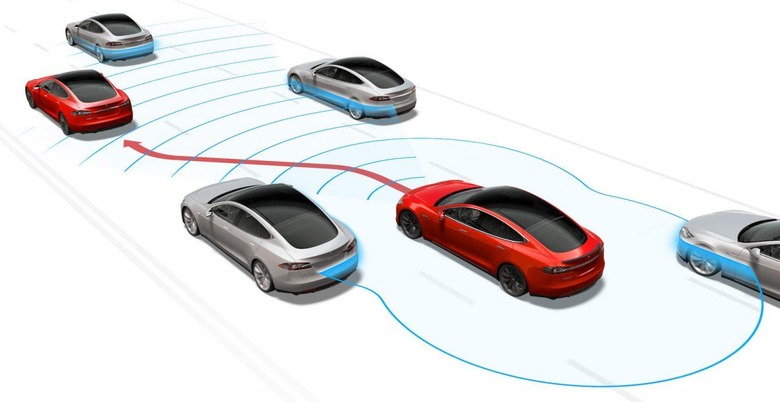Tesla makes self-driving tech standard on all cars
Every Tesla car produced from today, including the most affordable Model 3, will be equipped with "full self-driving capability" the EV automaker has announced today. The news makes Tesla the first mainstream car company to commit to self-driving technologies, though it will likely be a piecemeal rollout as the engineers fettle the software. Still, it's a hugely significant step, not least because the Model 3 – deliveries of which are expected to begin toward the end of next year – is going to open Tesla's technology up to a far broader audience than the current Model S sedan and Model X SUV.
Still, initially it'll be those two existing cars which get the self-driving functionality. Examples of the Model S and Model X with the new features are already in production now, Tesla says, and new orders will receive them. "All Tesla vehicles exiting the factory have hardware necessary for Level 5 autonomy," CEO Elon Musk says.
On the scale of autonomous vehicles, most manufacturers have been looking to Level 4 at best. That means the vehicle can handle everything but severe weather, and while that's happening the driver need not pay attention. Level 5, meanwhile, means that other than setting a destination no human intervention would be required.

"It'll take us some time into the future to complete validation of the software, and obviously get through required regulatory approval," Musk explained. "But the important thing is that the cars are ready to be made autonomous, at a safety level of at least twice that of a person, or maybe better. I think it's quite unexpected by a lot of people that it's happening right now."
Autonomous driving requires more than the average number of car sensors, and that's just what Tesla has committed to fitting to all of its new vehicles. It'll include eight surround cameras – together providing the computers with a 360-degree field of view around the car – with up to 250 meters, or around 820 feet, in range. They'll be accompanied with twelve ultrasonic sensors.
These ultrasonic sensors have been updated from Tesla's previous design, giving them "nearly twice" the range of the earlier system. They're also capable of detecting both hard and soft objects. Finally, there's a forward-facing radar, which – courtesy of new processing – takes advantage of a "redundant wavelength" so as to see through heavy rain, fog, dust, and, so Tesla claims, the car ahead.
The sensors have also been positioned so as to avoid build-up of snow or water, Musk explained. Like the current sensors, they're heated, too, which can shed a snow crust. Finally, there'll be an on-screen warning, telling the driver to clean any impaired sensors before setting off.
Unsurprisingly, Tesla has also had to upgrade the onboard processing so as to handle the new stream of data. In fact, the computer now has more than 40x the power of the system used to-date, and runs a homegrown neural net that combines the visual, sonar, and radar data. It's a win for NVIDIA, whose latest Titan chipset has been selected.
"Together," Tesla says, "this system provides a view of the world that a driver alone cannot access, seeing in every direction simultaneously and on wavelengths that go far beyond the human senses."

It's not entirely as straightforward as turning on an autonomous mode, however. In fact, the first iteration of the system will "temporarily lack certain features" that current Tesla cars have, when fitted with first-gen Autopilot. That includes automatic emergency breaking, collision warning, lane holding, and active cruise control.
According to Tesla, they'll be enabled over-the-air on the new "Hardware 2" system, as the company validates them. "We expect to reach feature parity of Hardware 2 in December," Musk said, "maybe 2-3 months. So initially a Hardware 1 car will be better than a Hardware 2 car."
That advantage won't last for long, mind. Musk says that owners of the new cars should be able to expect updates to the autonomous system every 2-3 months thereafter. A full cross-country drive, from LA to Times Square in New York City, should be possible by the end of 2017. That includes not touching the charger, Musk teased.
What Tesla won't be doing is offering insurance or indemnity for the autonomous driving. That, Musk says, will be down to individual drivers. He also took the opportunity, on a call with media, to criticize negative coverage of Autopilot – including
"If you write an article that effectively dissuades people from an autonomous car, you're killing people."
Existing cars with Autopilot as we've known it to-date will continue to get updates, Musk also promised. However, the nature of the hardware means that it'll never be as good as the new Hardware 2 system. "You just can't do this with one camera," Musk says, "you need eight cameras to do self-driving. You also need much more powerful computers to run the AI."
"Upgrading Hardware 1 cars just isn't practical. It would be like doing a spinal cord transplant." It'll be sometime in the middle of next year that Hardware 2 cars will start overtaking Hardware 1. Meanwhile, even though the physical hardware will be included as standard, the functionality will be a paid upgrade.
For the full self-driving hardware suite, it'll cost $8,000 Musk says. That's compared to $3,000 for the current Autopilot system. Initially there'll be a beta group of testers getting autonomous driving, including Musk himself, followed by a broader group, before being installed – but disconnected from the wheel and other controls – on cars more generally.

That's because what Tesla can't do, of course, is force regulators to give the technology approval. Musk says he hopes that by demonstrating the potential for autonomous driving in Hardware 2 cars to be safer than those of manually-operated vehicles, he'll be able to sway lawmakers. That will involve having the system effectively running in the background but not actively controlling the car.
"The system will always be operating in shadow mode," Musk explained. "We'll be gathering a lot of statistical data to identify false positives ... when would it have incorrectly acted or not acted, compared that to what should've been done in the real world. And at the point where it's a statistically significant result ... at that point I think regulators are likely to be comfortable approving it."
Just as Autopilot has improved over the months since Tesla enabled it on the Model S and then the Model X, so the autonomous AI will improve. "In the long-term we want to get to a 10x improvement," Musk says. "If that was applied across the board to all vehicle across the world, you'd go from 1.2 million deaths to 600,000 lives saved."
MORE Tesla
